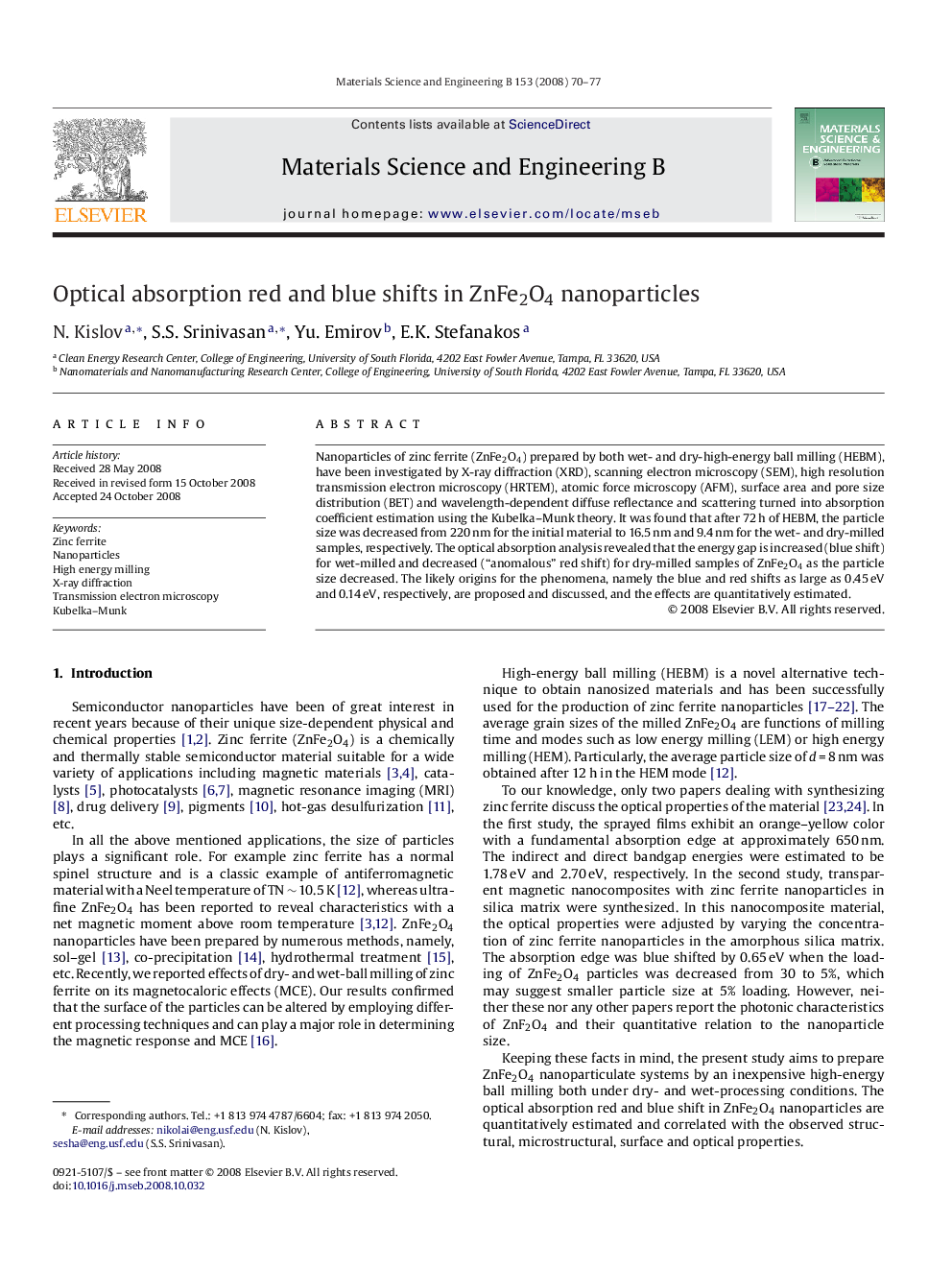| Article ID | Journal | Published Year | Pages | File Type |
|---|---|---|---|---|
| 1531113 | Materials Science and Engineering: B | 2008 | 8 Pages |
Nanoparticles of zinc ferrite (ZnFe2O4) prepared by both wet- and dry-high-energy ball milling (HEBM), have been investigated by X-ray diffraction (XRD), scanning electron microscopy (SEM), high resolution transmission electron microscopy (HRTEM), atomic force microscopy (AFM), surface area and pore size distribution (BET) and wavelength-dependent diffuse reflectance and scattering turned into absorption coefficient estimation using the Kubelka–Munk theory. It was found that after 72 h of HEBM, the particle size was decreased from 220 nm for the initial material to 16.5 nm and 9.4 nm for the wet- and dry-milled samples, respectively. The optical absorption analysis revealed that the energy gap is increased (blue shift) for wet-milled and decreased (“anomalous” red shift) for dry-milled samples of ZnFe2O4 as the particle size decreased. The likely origins for the phenomena, namely the blue and red shifts as large as 0.45 eV and 0.14 eV, respectively, are proposed and discussed, and the effects are quantitatively estimated.
